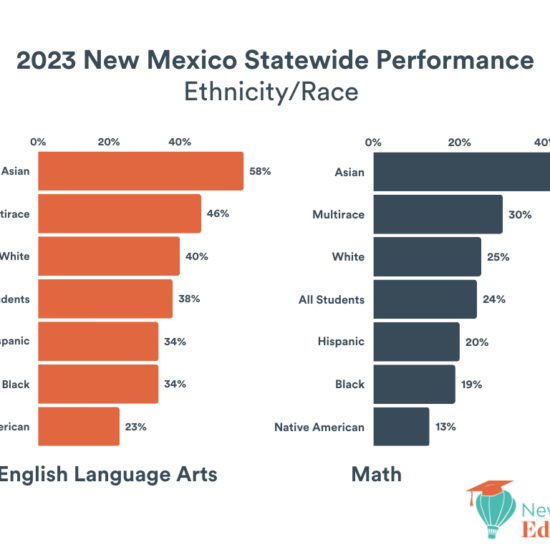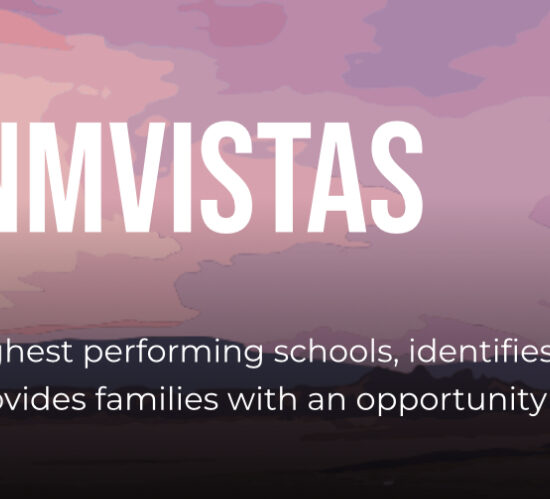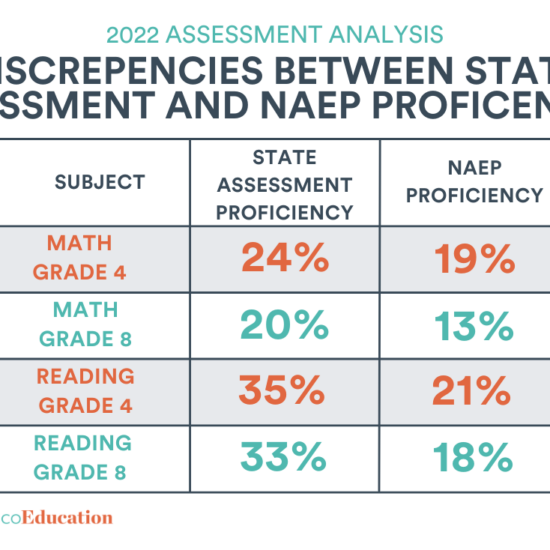
While the high-level view is grim of New Mexico fourth- and eighth-grade students’ performance on national 2022 math and literacy tests released this week, a deeper look at the data reveals even more troubling truths.
Significantly more New Mexico students scored below basic – far below proficiency – in 2022 than in 2019, the last time the National Assessment of Educational Progress (NAEP) was administered. Those numbers look even worse for the state’s low-income students and students of color, who comprise the majority of students in the state.
New Mexico’s results should give everyone pause, but people aren’t paying sufficient attention, said Amanda Aragon, executive director of NewMexicoKidsCAN, an education advocacy organization.
“I am afraid people are not aware of the dire implications of this data,” Aragon said. “The growth in students performing below basic in reading and math tells us that many of our students do not have the most basic literacy and numeracy skills. Without urgent course correction this will be catastrophic for the future of our children, our communities, our state and our country.”
Let’s dive into the numbers, their meaning, and their implications.

Reading
Fourth grade
Scoring below basic in fourth-grade reading means a student cannot recognize an explicitly stated detail in an informational text; recognize a description of a character’s action explicitly stated in a story; or recognize the meaning of an idiom used in an expository article.
More than half of New Mexico fourth-graders (52 percent) scored below basic in reading. In 2019, 47 percent of students scored below basic. Federal education officials consider that a significant increase in below basic scores.
Just 21 percent scored proficient or advanced – defined by NAEP as “demonstrating solid academic performance and competency over challenging subject matter.”
Yet even those numbers mask the magnitude of the crisis. Some 71 percent of Native American students scored below basic in fourth-grade reading. Only 10 percent were at or above proficiency
And 55 percent of Hispanic students – who comprise the majority of New Mexico public school students – scored below basic, while just 20 percent were at or above proficiency.
Low-income students also struggled – 57 percent scored below basic, with 17 percent at or above proficiency.
Eighth grade
In eighth grade, being below basic means, among other things, that a student cannot use information from an article to provide an answer to a question posed in the article; recognize the meaning of a word as it is used in a specific context; or describe an explicitly stated key idea from a science article.
The numbers look only marginally better for eighth-grade reading – 43 percent of students were below basic in reading, compared to 39 percent in 2019. Eighteen percent score proficient or advanced.
Key subgroups or students performed below. that statewide average. As in fourth grade, Native American eighth-graders were the lowest performing group, with 53 percent below basic and just 9 percent at or above proficiency.
Among Hispanic students, 48 percent scored below basic, and 14 percent at or above proficiency.
Low-income students mirrored Hispanic students, with 48 percent below basic and 13 percent proficient or advanced.
Math
Fourth grade
If New Mexico’s NAEP reading scores are cause for concern, then math scores provide no reassurance. Scoring below basic in fourth-grade math means a student is unable to find a total in a representation of money, even using a calculator (what is the total amount of a five dollar bill a one dollar bill, and two quarters); name a location specified by coordinates; or identify appropriate measurements from a context (height, weight, and volume).
Forty percent of New Mexico’s eighth-graders were below basic in 2022 NAEP results. In 2019, 28 percent were below basic. The 12 percentage point increase was flagged by NAEP as a worrisome drop.
Among Native American students, 52 percent were below basic and 10 percent were at or above proficiency.
Among Hispanic students, 42 percent were below basic and 16 percent were proficient or advanced.
And among low-income students, 45 percent were below basic and 15 percent were at or above proficiency.
Eighth grade
The most dismal results were in eighth-grade math. Being below basic in eighth-grade math means being unable to select a graph that best represents given data; determine the shortest path between two points; or determine a ratio from a story problem.
In New Mexico, 55 percent of eighth-graders scored below basic in math. That represents a significant drop from 2019, when 44 percent were below basic.
As with the other exams, Native American students were the lowest performing group, with 66 percent below basic and only 5 percent at proficiency.
Among Hispanic students, 59 were below basic and 9 percent were proficient and advanced.
Among low-income students, 60 percent were below basic and 9 percent proficient and advanced.
While New Mexico’s numbers are far worse than national averages, education advocates across the country are calling this year’s NAEP scores a national call to arms.
““We are talking about a really serious erosion of children’s capacities to read and count in the next generation of the workforce, and so this becomes a global economic issue for America,” said Bev Purdue the former Democratic governor of North Carolina.







